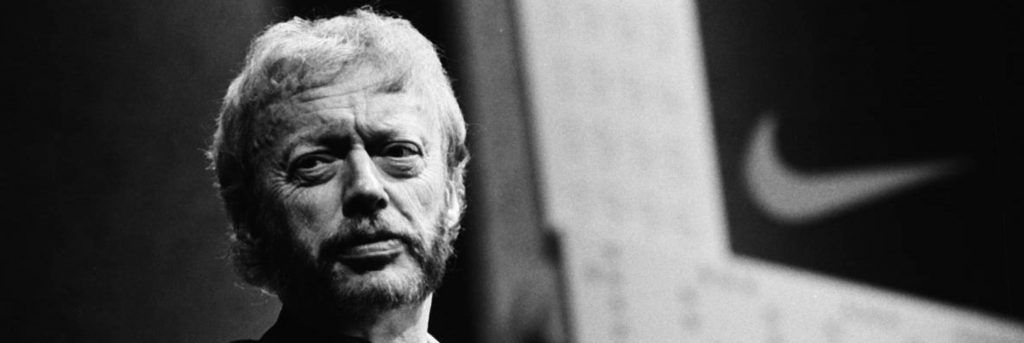MBA Alumni Spotlight: Nike Co-Founder Phil Knight – Stanford Graduate School of Business

Phil Knight, a graduate of the Stanford Graduate School of Business, didn’t become one of “the most powerful person in sports” overnight. The co-founder and chairman of Nike, Inc., the world’s most successful sports apparel manufacturing company, saw a lengthy and uncertain career filled with hurdles before amassing tantamount success.
Early Life
Knight was born February 24, 1938 to a lawyer turned newspaper publisher, William, and his wife Lota. Knight’s father was noted as a successful man who encouraged him to push his limits. As a runner, Knight pushed himself on the track, competing as a middle-distance runner at the University of Oregon.
Despite his early success as a runner, Knight, however, was unsure of his future career options. He graduated with a degree in journalism in 1959 and tried a number of different jobs before enlisting in the United States Army for one year. He returned to work as assistant professor at Portland State University before making the decision to enroll at the Stanford Graduate School of Business.
At Stanford, Knight devised the early workings of a business plan for a shoe company. While working toward his MBA degree, Knight wrote a paper entitled, “Can Japanese Sports Shoes Do to German Sports Shoes What Japanese Cameras Did to German Cameras?” He completed the MBA program in 1962.
Beginnings of Nike, Inc.
Knight would eventually visit Japan after graduation. There he discovered the Onitsuka Tiger running shoes, which were high quality shoes made at a low cost. Knight, impressed by the company, secured a distribution contract with Onitsuka. Together with his former college track coach, Bill Bowerman, he started selling Tiger shoes in the U.S.
This humble little operation would go on to become Nike, Inc., a company that is now valued at $91.2 billion, according to Forbes. Thanks to stellar marketing campaigns and endorsement deals with the world’s top athletes, Phil has become one of the world’s richest self-made billionaires.
“Phil understands the symbolic power and attractiveness of sports,” said A. Michael Spence, Dean of the Stanford Graduate School of Business and a Nike board member. “And he helped build that connection in our culture.”
Early Success and Necessary Pivots
Nike, Inc. made its first splash at the 1972 Olympics with the release of the Nike Cortez. The running shoes, which famously debuted the “swoosh” logo, came in different color schemes and became an instant hit in the running community. A decade later, the shoe company would unveil the Air Force 1, the first shoe to feature a pocket of air in the heel that provides cushioning and support to basketball players.
Knight understood that if Nike were to become even more successful, the company would have to appeal to average people, not just top athletes. Signing the likes of Michael Jordan, Andre Agassi, Charles Barkley, and Tiger Woods, Nike pivoted from a product-oriented company to a marketing-oriented one. The company also expanded into other sports, such as hockey, soccer, and golf, and into additional forms of apparel.
“The most important thing we do is market the product,” Knight told the Harvard Business Review. “Marketing knits the whole organization together. The design elements and functional characteristics of the product itself are just part of the overall marketing process.”
Life After Nike, Inc.
Knight stepped down as CEO of Nike, Inc. in 2004, and retired from his position as chairman of the company’s board of directors in 2016. Since stepping down as CEO, Knight has given back to the business school that started it all for him: Stanford’s Graduate School of Business.
“Stanford Business School was an important part of my life,” Knight said after announcing one of his several philanthropic donations to his alma mater. “This is a once-in-a-lifetime chance to give back to the School and help it continue to push the boundaries of excellence in management education.”
In 2006, Knight donated $105 million to Stanford to help build the Knight Management Center, which opened in 2011.
“People come up to Penny [his wife] and me to thank us for making this possible,” Knight said after the Center opened its doors to students for the first time. “I tell them it is an honor for us to be associated with a special institution.”
In 2016, it was announced that Knight had given $400 million to Stanford for a scholarship program. The new Knight-Hennessy Scholars Program will fully fund 100 high-achieving students each year in their pursuit of graduate degrees at any of Stanford’s seven graduate schools, including Stanford GSB. The scholarship is co-named for former Stanford President John L. Hennessy. The program has a total endowment of $750 million, making it the largest fully endowed scholarship program in the world.
“John and I dream of a future 20, 30 or 50 years from now, when thousands of graduates—who can think outside the box as skilled problem-solvers—will be working together for a more peaceful, habitable world,” Knight said.
